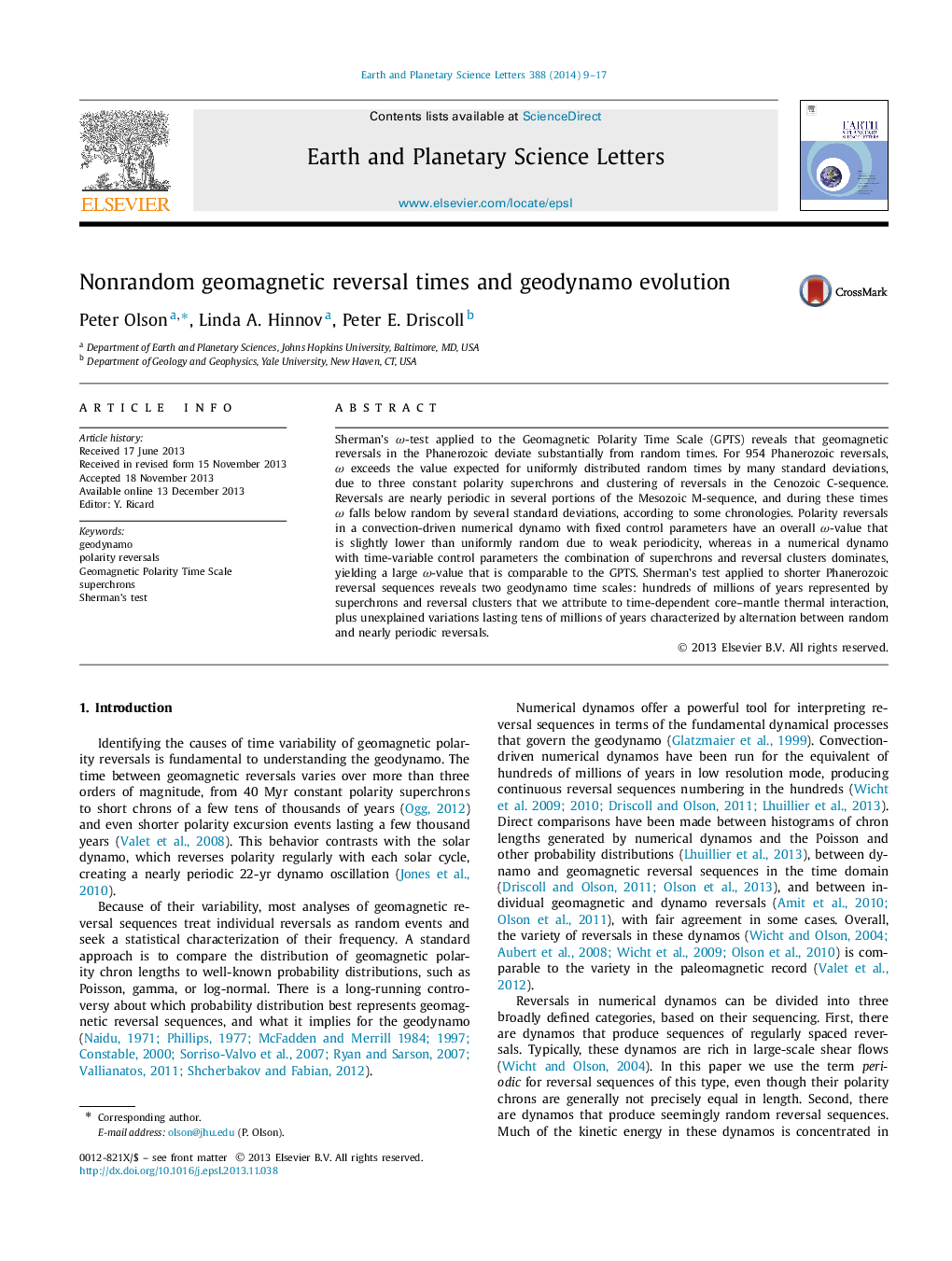| Article ID | Journal | Published Year | Pages | File Type |
|---|---|---|---|---|
| 6429747 | Earth and Planetary Science Letters | 2014 | 9 Pages |
â¢We apply Shermanʼs test to the Phanerozoic Geomagnetic Polarity Time Scale.â¢We find evidence of nonrandom behavior in geomagnetic reversal times.â¢Nonrandom geomagnetic reversal times indicate irregular evolution of the core.
Shermanʼs Ï-test applied to the Geomagnetic Polarity Time Scale (GPTS) reveals that geomagnetic reversals in the Phanerozoic deviate substantially from random times. For 954 Phanerozoic reversals, Ï exceeds the value expected for uniformly distributed random times by many standard deviations, due to three constant polarity superchrons and clustering of reversals in the Cenozoic C-sequence. Reversals are nearly periodic in several portions of the Mesozoic M-sequence, and during these times Ï falls below random by several standard deviations, according to some chronologies. Polarity reversals in a convection-driven numerical dynamo with fixed control parameters have an overall Ï-value that is slightly lower than uniformly random due to weak periodicity, whereas in a numerical dynamo with time-variable control parameters the combination of superchrons and reversal clusters dominates, yielding a large Ï-value that is comparable to the GPTS. Shermanʼs test applied to shorter Phanerozoic reversal sequences reveals two geodynamo time scales: hundreds of millions of years represented by superchrons and reversal clusters that we attribute to time-dependent core-mantle thermal interaction, plus unexplained variations lasting tens of millions of years characterized by alternation between random and nearly periodic reversals.
